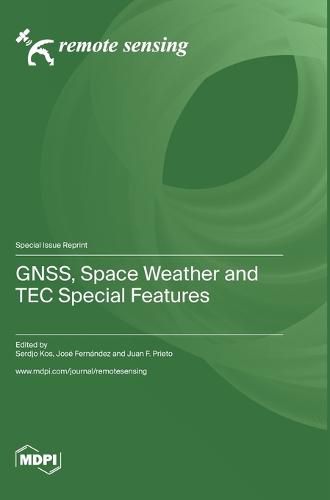Readings Newsletter
Become a Readings Member to make your shopping experience even easier.
Sign in or sign up for free!
You’re not far away from qualifying for FREE standard shipping within Australia
You’ve qualified for FREE standard shipping within Australia
The cart is loading…






This title is printed to order. This book may have been self-published. If so, we cannot guarantee the quality of the content. In the main most books will have gone through the editing process however some may not. We therefore suggest that you be aware of this before ordering this book. If in doubt check either the author or publisher’s details as we are unable to accept any returns unless they are faulty. Please contact us if you have any questions.
In the domain of electronic navigation, satellite navigation (GNSS) is one of the most important complex modern systems. GNSS is a key aspect of infrastructure which supports the development and improvement of power grid systems, banking operations, global transportation systems, and global communication systems. Today, GNSS requires the use of several positioning networks and sensors, such as radio networks and MEMS. The Earth's atmosphere, particularly the ionosphere and troposphere, can be seen as a huge laboratory where multiple processes and phenomena directly affecting the propagation of EM waves occur. Like all complex systems, GNSS technology has also gone through certain evolutionary stages. Factors affecting the future evolution of GNSS technology include the appearance of new signals and frequencies, complementary technologies in use, etc., but in the domain of GNSS technologies, it is essential to study the impact of space weather on GNSS systems. A key part of research related to GNSS technologies is the vertical TEC distribution and anomalies related to earthquakes and volcanic eruptions on Earth. There are many challenges that need to be addressed because they affect reliability, accuracy, and all other essential parameters of GNSS systems. It addresses some of these issues by publishing manuscripts which study GNSS risk assessment, different effects of space weather disturbances on the operation of GNSS systems, environmental impacts on the operation of GNSS systems, GNSS positioning error budgets, TEC special features in volcano eruptions, and similar topics.
$9.00 standard shipping within Australia
FREE standard shipping within Australia for orders over $100.00
Express & International shipping calculated at checkout
This title is printed to order. This book may have been self-published. If so, we cannot guarantee the quality of the content. In the main most books will have gone through the editing process however some may not. We therefore suggest that you be aware of this before ordering this book. If in doubt check either the author or publisher’s details as we are unable to accept any returns unless they are faulty. Please contact us if you have any questions.
In the domain of electronic navigation, satellite navigation (GNSS) is one of the most important complex modern systems. GNSS is a key aspect of infrastructure which supports the development and improvement of power grid systems, banking operations, global transportation systems, and global communication systems. Today, GNSS requires the use of several positioning networks and sensors, such as radio networks and MEMS. The Earth's atmosphere, particularly the ionosphere and troposphere, can be seen as a huge laboratory where multiple processes and phenomena directly affecting the propagation of EM waves occur. Like all complex systems, GNSS technology has also gone through certain evolutionary stages. Factors affecting the future evolution of GNSS technology include the appearance of new signals and frequencies, complementary technologies in use, etc., but in the domain of GNSS technologies, it is essential to study the impact of space weather on GNSS systems. A key part of research related to GNSS technologies is the vertical TEC distribution and anomalies related to earthquakes and volcanic eruptions on Earth. There are many challenges that need to be addressed because they affect reliability, accuracy, and all other essential parameters of GNSS systems. It addresses some of these issues by publishing manuscripts which study GNSS risk assessment, different effects of space weather disturbances on the operation of GNSS systems, environmental impacts on the operation of GNSS systems, GNSS positioning error budgets, TEC special features in volcano eruptions, and similar topics.